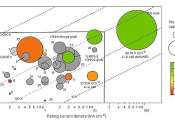Co-doped carbon anode material for high-performance seawater batteries
Despite the many potential applications of seawater batteries (SWBs), the limited performance of available materials has hindered their commercialization. To tackle this issue, scientists from Korea Maritime and Ocean University ...
Feb 1, 2022
0
80









